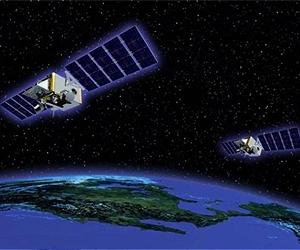
A Space Tracking and Surveillance System (STSS) Demonstration satellite built by Northrop Grumman and Raytheon autonomously transferred target track data from its acquisition sensor to its tracking sensor July 23, the first time such a capability has been executed in space for the program.
The data hand-off demonstration occurred when the U.S. Missile Defense Agency (MDA) satellite acquired a ground laser operated and pointed by the U.S. Air Force Research Laboratory from the Starfire Optical Range at Kirtland Air Force Base near Albuquerque, N.M. Northrop Grumman has worked with the Starfire Optical Range previously to calibrate the STSS satellite acquisition sensors.
"This is a major success for the STSS program. We proved that the STSS satellites can autonomously transition from target acquisition and track mode using the acquisition sensor to target precision track mode using the multiple band track sensor," said Gabe Watson, vice president of missile defense and missile warning programs for Northrop Grumman's Aerospace Systems sector.
"All of these operations occurred as intended, with no operator intervention. This is the same type and sequence of functions that will be performed on-board during subsequent MDA missile tests."
Watson explained that once the acquisition sensor acquired the ground laser, it formed a confirmed track, which was passed to the track sensor.
The track sensor slewed and pointed to the coordinates reported by the acquisition sensor, detected the ground laser and formed an on-board track of the ground laser. All of these data was transmitted to the STSS ground systems located at Schriever AFB in Colorado Springs.
The Missile Defense Agency is pursuing the STSS Demonstration program as a space-based sensor component of the Ballistic Missile Defense System. The STSS satellites will provide missile defense sensor risk reduction concepts to support development and fielding of a future missile defense operational satellite constellation.






No comments:
Post a Comment